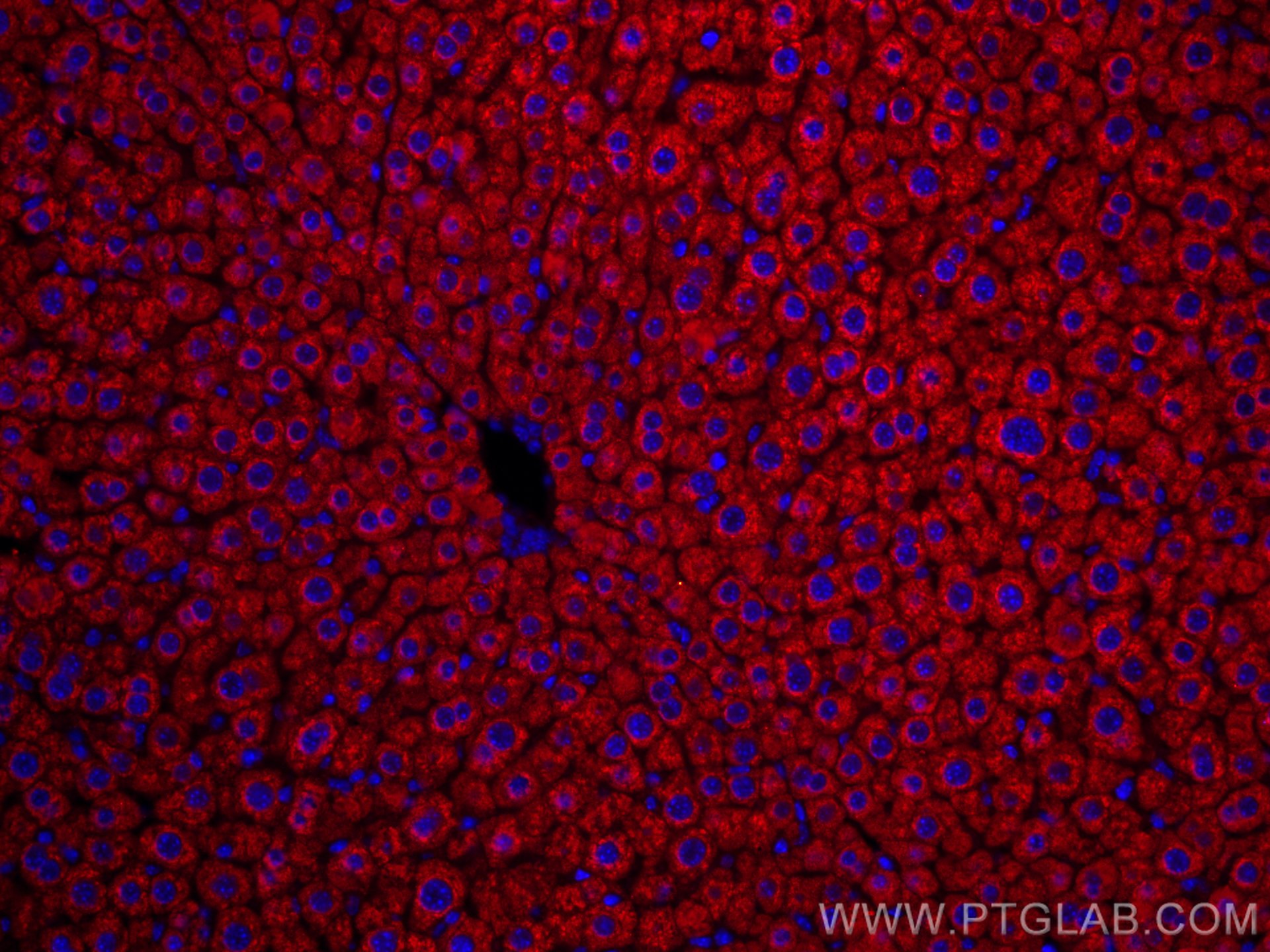CoraLite®594-conjugated Mcp1 Monoclonal antibody
Mcp1 Monoclonal Antibody for IF-P
Host / Isotype
Mouse / IgG1
Reactivity
mouse
Applications
IF-P
Conjugate
CoraLite®594 Fluorescent Dye
CloneNo.
1B9F7
验证数据展示
经过测试的应用
| Positive IF detected in | mouse liver tissue |
推荐稀释比
| Application | Dilution |
|---|---|
| Immunofluorescence (IF) | IF : 1:50-1:500 |
| It is recommended that this reagent should be titrated in each testing system to obtain optimal results. | |
| Sample-dependent, Check data in validation data gallery. | |
产品信息
CL594-66272 targets Mcp1 in IF applications and shows reactivity with mouse samples.
| Tested Applications | IF-P |
| Tested Reactivity | mouse |
| Immunogen | Mcp1 fusion protein Ag24085 种属同源性预测 |
| Host / Isotype | Mouse / IgG1 |
| Class | Monoclonal |
| Type | Antibody |
| Full Name | chemokine (C-C motif) ligand 2 |
| Synonyms | AI323594, Ccl2, chemokine (C C motif) ligand 2, HC11, JE, MCAF, MCP 1, MCP1, Scya2, Sigje, SMC CF |
| Observed Molecular Weight | 26 kDa |
| GenBank Accession Number | NM-011333 |
| Gene Symbol | Ccl2 |
| Gene ID (NCBI) | 20296 |
| Conjugate | CoraLite®594 Fluorescent Dye |
| Excitation/Emission Maxima Wavelengths | 588 nm / 604 nm |
| Form | Liquid |
| Purification Method | Protein G purification |
| Storage Buffer | PBS with 50% Glycerol, 0.05% Proclin300, 0.5% BSA, pH 7.3. |
| Storage Conditions | Store at -20°C. Avoid exposure to light. Stable for one year after shipment. Aliquoting is unnecessary for -20oC storage. |
背景介绍
Monocyte chemoattractant protein-1 (MCP-1/CCL2) is one of the key chemokines that regulate migration and infiltration of monocytes/macrophages. Both CCL2 and its receptor CCR2 have been demonstrated to be induced and involved in various diseases. Migration of monocytes from the blood stream across the vascular endothelium is required for routine immunological surveillance of tissues, as well as in response to inflammation.
实验方案
| Product Specific Protocols | |
|---|---|
| IF protocol for CL594 Mcp1 antibody CL594-66272 | Download protocol |
| Standard Protocols | |
|---|---|
| Click here to view our Standard Protocols |
